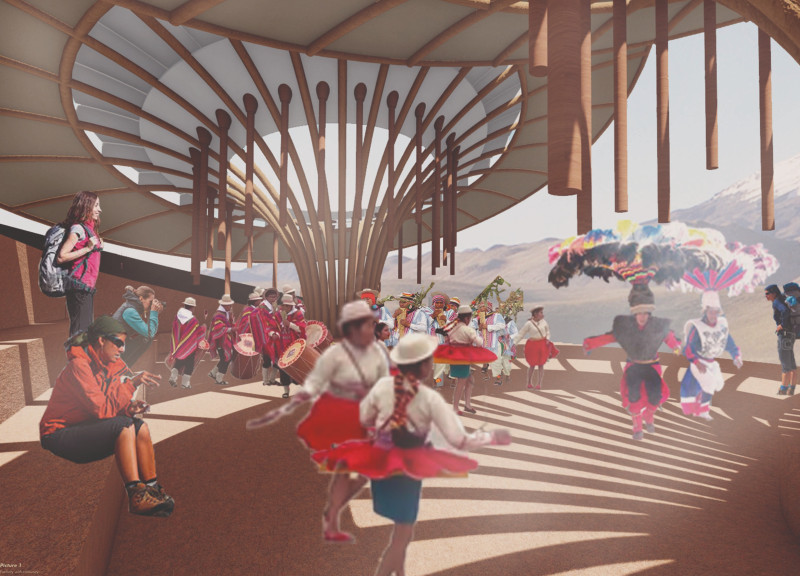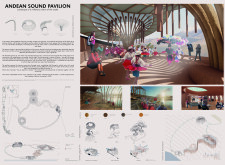5 key facts about this project
The Andean Sound Pavilion serves as a bridge between cultural tradition and nature, located near Chungará Lake in the Andean highlands of Bolivia. It celebrates the musical and spiritual heritage of the Aymara community, reflecting their beliefs and practices. The design connects three realms: the subterranean, the earthly, and the celestial. This connection plays an important role in the Aymara cosmology, which recognizes the cycles and relationships of life.
Cultural Connection
The pavilion captures the Aymara worldview, which emphasizes a dual relationship between humans and the universe. Its design translates rituals and traditions into a physical space that invites engagement. As visitors move through the pavilion, they experience different themes: wisdom, sacredness, introspection, and celebration. Each area encourages interaction and reflection, allowing people to connect with the cultural significance of the space.
Ritual Focus
At the heart of the pavilion is the rite of serenity. This important Aymara ritual involves making offerings to Sereno, the spirit of Aymara music. The pavilion offers a setting for the community to prepare musical instruments for festive occasions. It highlights the role of the space in facilitating cultural practices and gatherings, making it a place for shared experiences.
Natural Context
Materials are not explicitly mentioned, but it is clear that the design aims to harmonize with its surroundings. The pavilion considers sustainable practices and local resources, aligning with the Aymara respect for nature. This relationship is especially relevant, as water holds cultural significance for the community.
The pavilion incorporates sound elements that respond to the wind. This feature enhances the sensory experience, allowing visitors to feel both the environment and the community’s spiritual traditions intertwining. The architectural design becomes a living expression of Aymara identity and cultural continuity.


















































